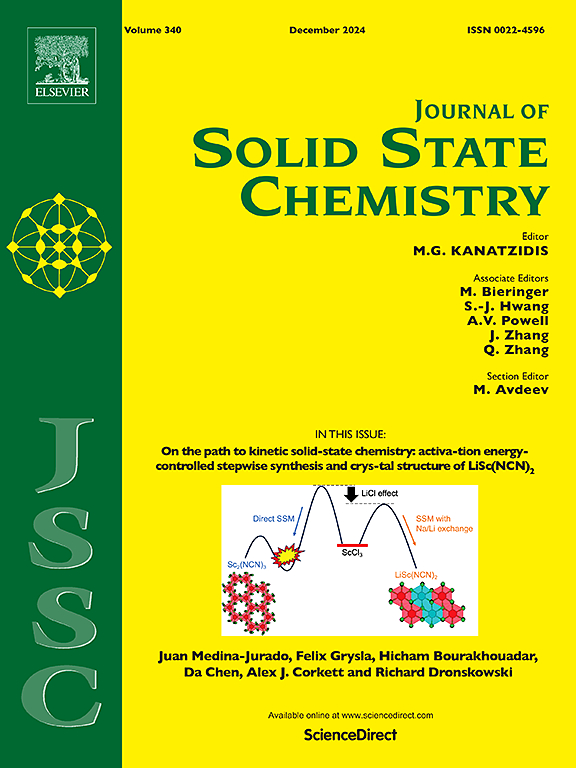Investigation of intrinsic and extrinsic defects in Na-doped Cu2Sn1-xGexS3 thin films by photoluminescence
IF 3.2
3区 化学
Q2 CHEMISTRY, INORGANIC & NUCLEAR
引用次数: 0
Abstract
The defect properties of NaF-deposited Cu2Sn1–xGexS3 (CTGS) thin films, which are expected to improve the conversion efficiency of CTGS solar cells, were investigated by photoluminescence (PL). The PL spectra from a 0 mg of NaF deposited CTGS thin film were observed to have four peaks: three of donor-acceptor pair (DAP) recombination luminescence and one of the excitons (EX) or near the band edge (NBE) luminescence. On the other hand, 10 mg of NaF-deposited CTGS thin film exhibited PL spectra with three peaks, including two from DAP recombination luminescence and one from EX or NBE luminescence. One peak in the Na-undoped CTGS thin film exhibited an activation energy of 39.5 ± 21.2 meV, indicating deeper level defects compared to the energy levels of approximately 26 meV at room temperature (RT), which serves as a capture center for minority carriers at RT. In contrast, the Na-doped CTGS thin film exhibited shallower defect levels of 8.2 ± 3.9 meV lower than the energy levels at RT. These results suggest that Na doping generated new defects that served as carrier sources. Consequently, this study suggests that Na element incorporation holds promise for improving the electrical properties of CTGS solar cells. Based on the above findings, we believe that Na-doped CTGS solar cells represent a promising alternative to existing solar cell materials and have, the potential to enhance low conversion efficiency.

求助全文
约1分钟内获得全文
求助全文
来源期刊

Journal of Solid State Chemistry
化学-无机化学与核化学
CiteScore
6.00
自引率
9.10%
发文量
848
审稿时长
25 days
期刊介绍:
Covering major developments in the field of solid state chemistry and related areas such as ceramics and amorphous materials, the Journal of Solid State Chemistry features studies of chemical, structural, thermodynamic, electronic, magnetic, and optical properties and processes in solids.
 求助内容:
求助内容: 应助结果提醒方式:
应助结果提醒方式:


